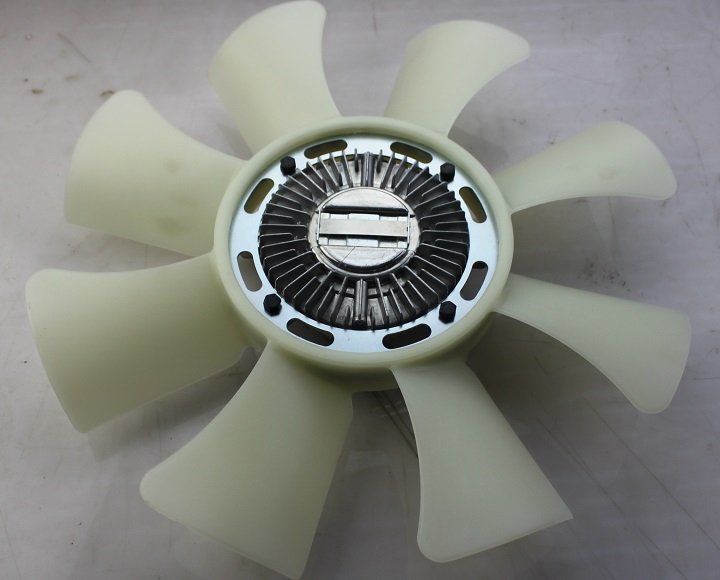The Buzz on Fan Blades
Table of ContentsExcitement About Fan BladesThe Fan Blades PDFsThe smart Trick of Fan Blades That Nobody is Discussing
If not, you'll require a new clutch. Don't let the car overheat. Eliminate all or part of the cardboard prior to the temperature goes over 210 F. Use a probe-type thermometer to examine the temperature of the air moving through the radiator. You can examine the fan's speed versus the manufacturer's specifications by utilizing a photo-tachometer.
It's worth utilizing if the producer offers any specifications, even approximate. On some late-model Jeep Grand Cherokees that have both a special clutch fan and a separate electrical fan, the factory specification is simply 300 rpm max with the engine cold. Here, the electric fan is a significant factor to engine cooling.
At high coolant temperatures, the fan speed will increase to about 2100 to 2500 rpm with the engine revving at 3000 rpm. Begin by separating the clutch from the fan. On most domestic-brand pickups and SUVs, the fan is held to the clutch by a circle of screws or bolts, and the clutch is threaded onto the water pump sheave by a large nut.
Before you unbolt anything, look at the fan sheave and the routing of the drivebelt. If it's a serpentine belt and twists around the pulley from the underside, it's most likely spinning the fan in reverse. Be sure you get a matching replacement, frequently significant "Reverse." If you're fortunate, there might be adequate room to unbolt and remove the fan and clutch without removing the radiator shroud.
Some Known Details About Fan Blades

This means draining pipes some coolant, detaching the upper radiator tube and sometimes removing the belt. If the clutch is held to the belt wheel hub by screws or bolts, use a plumbing's strap wrench to keep the pulley-block from turning while you loosen up the screws. If they're not really tight, you may be able to get away with simply continuing the belt.
There are economical wrenches created specifically for this job. Inspect with your auto parts shop. Reverse the order to install the brand-new clutch. When managing the clutch, lay it flat with the seal dealing with up to make sure that no silicone leakages out. fan blades. You may be lured to drop the clutch and set up an electric fan package.
But if you're simply repairing the household automobile, remember that a car maker can integrate electrical fan manages into the powertrain computer system for a more accurate outcome than you could ever get with an aftermarket package. Buy or rent any unique tools needed to loosen the clutch from the water pump.
Fan clutches and blades are two extremely important parts when it concerns maintaining precise engine temperature. With all of the innovation built into today's diesel motor, coolant temperature level is an essential factor in how the different computer systems connect to preserve fuel air ratios for maximum fuel economy and most affordable possible emissions. Diesel Parts, Inc. has been supporting diesel motor powered markets for over forty years. In that time an excellent amount of understanding has been gotten concerning fan clutches and blades. We use a lot more than simply fan clutch repair kits. Diesel Components, Inc. stocks parts to cover 99% of all strong fan clutch repair work requirements.

Examine This Report about Fan Blades
will have you covered for all of your fan clutch and fan blade needs with items from companies such as Bendix, Horton, Kysor/BorgWarner, Eaton, Schwitzer, and Spectrum from Set Masters, consisting of lots of that are either outdated or difficult to find. fan blades. Couple that with the accessibility of a large range of fan blades from American Cooling, Horton, Multi Wing, and Kysor/Borg Warner, and your fan clutch and blade problems are resolved.
If you do not see what you require for diy fan clutch repair by visiting our on line shop Click on this link to go directly to our Contact page, or call 1. 800.252. 6625 regional 952. fan blades. 890.2885 you can likewise come by and see us in individual at 1500 East Cliff Roadway, Burnsville, MN 55337, we're open from 8:00 AM to 5:00 PM Monday Through Friday, except for major vacations.

In order for a GoldTop fan clutch to operate properly, there should be in between 90 120 psi of atmospheric pressure going into the fan clutch. This suggests the air pressure should be tested at the end of the address air line, where it connects to the fan clutch. The compressor 's pressure gauge does not precisely reveal how much atmospheric pressure is actually going into the fan clutch.
You need a minimum of 90 psi, right at the entry point of my blog your fan clutch, in order for it to run correctly. If you have more than 90 psi, right at the entry point of your fan clutch, and your fan clutch still won't disengage, the Automobile Lock feature on your fan clutch has actually begun.